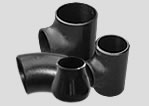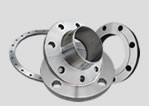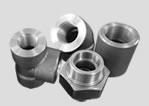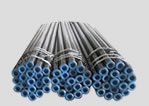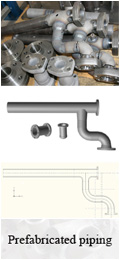Overview of forged pipe fittings
1. Die forging for small-size pipe fittings such as tee, cross and elbow with socket welding and thread, the shape is relatively complex and should be manufactured by die forging process. The blank used for die forging shall be rolled profile, such as bar, thick wall pipe or plate. When the steel ingot is used as raw material, the steel ingot shall be rolled into bar in advance or used as blank for die forging after forging, so as to eliminate segregation, porosity and other defects in the steel ingot. After heating, the blank is put into the die for forging, and the pressure makes the metal flow and fill the die cavity; If the blank after die forging has flash, it must go through the step of punching the remaining flash material, so as to complete all die forging work.
2. Free forging for pipe fittings with special shapes or those not suitable for die forging, free forging process can be used. The general shape of pipe fittings shall be forged by free forging; For tee, the branch pipe shall be forged.
3. Cutting processing for some pipe fittings with cylindrical shape, they can be directly cut and formed by bar or thick wall pipe, such as double socket pipe hoop, union joint, etc. During processing, the fiber flow direction of metal materials shall be roughly parallel to the axial direction of pipe fittings. For tees, crosses, elbows and pipe fittings, bars shall not be directly cut and formed.
previous page:Stainless Steel Forged Screwed Pipe Fitting Tee
next pageDifference between forged pipe fittings and cast pipe fittings


